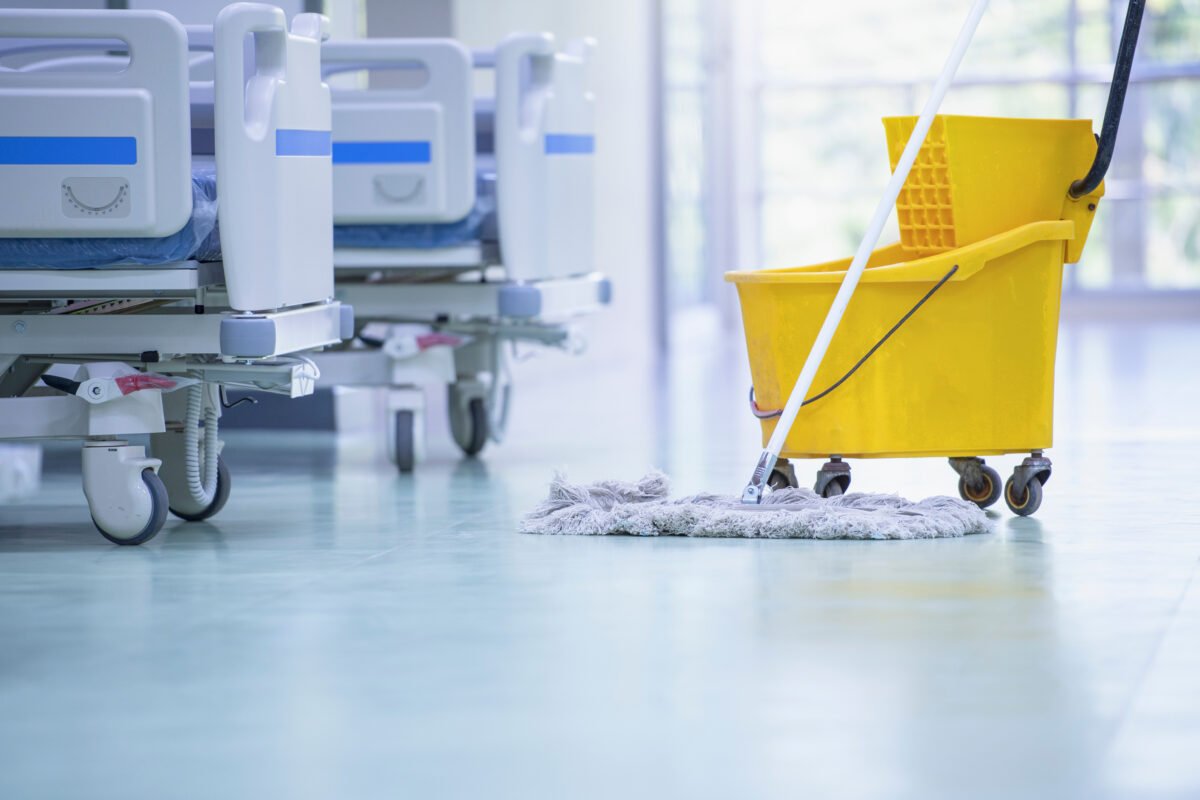New Generation of Dangerous Disinfectants Takes Hold During COVID
Distressed Patriotic Flag Unisex T-Shirt - Celebrate Comfort and Country $11.29 USD Get it here>>


As the world grappled with the COVID-19 pandemic, another insidious threat may have been overlooked. In our fervor to fight the virus, potentially harmful substances seeped unnoticed into many of our homes, schools, hospitals, and workplaces.
A new review in Environmental Science & Technology, the product of a collaborative effort by 26 scientists, casts a spotlight on the burgeoning use of Quaternary Ammonium Compounds, or QACs. These pervasive chemicals have seen their usage spike amid the pandemic and the researchers are urging us to reassess their safety.
Unraveling the QAC Journey
QACs are common chemicals with many applications, often camouflaged under innocuous labels. QACs serve as antimicrobials, preservatives, and antistatic agents in cleaning and disinfecting products. They are also present in many personal care items, including eye drops, shampoo, nasal sprays, and mouthwash.
First introduced in the 1940s, QACs have been around for decades. However, the COVID-19 pandemic supercharged the prevalence of QACs in our lives, according to a policy analysis by the Toxic Use Reduction Institute at UMass Lowell. Moreover, the FDA’s 2016 ban on 19 other antimicrobials significantly expanded the use of these products.
In March 2020, the Environmental Protection Agency (EPA) introduced List N, a searchable database to identify products effective against SARS-CoV-2, the virus that causes COVID-19. A peer-reviewed paper published in the Environmental Science & Technology Letters highlights that approximately half of the products listed rely on specific QACs as active ingredients, with more than 200 QAC-based products making the list.
Ripple Effects
The widespread use of QACs is like a stone thrown into a pond, causing waves of toxic effects on our environment and health. As the use of these chemicals grows, so do their harmful effects.
Researchers demonstrate that aquatic organisms, often the silent barometers of environmental health, show signs of acute and chronic toxicity due to escalating QAC concentrations. “QAC concentrations in aquatic ecosystems are approaching protective toxicity thresholds,” the authors state.
In the same vein, we are beginning to see worrying signs of the potential impacts of QACs on human health. For example, a 2021 study published in Environmental Science and Technology revealed that the concentration of QACs in blood samples taken during the COVID-19 pandemic was significantly higher than those taken before the pandemic.
According to the Environmental Science & Technology review, individuals face skin irritation, respiratory problems, and metabolic struggles due to QAC exposure. Further still, animal studies demonstrate that the adverse effects may extend to developmental and reproductive toxicity, which could have far-reaching implications for future generations.
Unfortunately, our most vulnerable groups have been disproportionately exposed to these compounds. With their frequent hand-to-mouth behavior, young children in schools and daycares are particularly at risk.
“School staff and their students used disinfectants extensively during the COVID-19 pandemic, in some cases unsafely and without instruction on proper handling and use,” the authors report.
Moreover, the elderly and those with compromised health, often confined to healthcare facilities, may also have been exposed to higher levels of QACs due to rigorous cleaning protocols.
One of the most disturbing ripple effects is the potential for QACs to promote antimicrobial resistance.
“Following the COVID-19 pandemic, an increase in antibiotic resistance was observed. This phenomenon was likely caused by a confluence of factors, of which the increased use of QAC-based disinfectants may be one,” state the study authors.
This resistance—created by the very weapons meant to combat pathogens—could undermine the effectiveness of vital antimicrobial treatments in the future, leaving us vulnerable to a myriad of diseases.
Hidden in Plain Sight
Identifying QACs is often challenging for consumers due to the complex and varied ways these chemicals are listed. Products don’t list QACs as such, instead disclosing the full name of the active ingredient.
With hundreds of QAC variants in circulation, such as the frequently used benzalkonium chlorides, spotting them can be difficult. These compounds, which might appear as BAC, BZK, BKC, or ADBAC, are widely present in disinfecting wipes, sprays, and hand sanitizers. Other QACs can be identified by “ammonium chloride” at the end of their names.
The best way to steer clear of QACs is to scrutinize the product ingredient list and the Safety Data Sheets (SDS) if available, a daunting task for the average consumer.
Regulatory Loopholes and Challenges
Further complicating the matter is how we monitor and manage QACs in the United States, which depends on what we use them for. As a result, this system can lead to some uses of QACs getting a closer look while others might slip through the cracks.
According to the study authors, QACs are regulated by the Environmental Protection Agency (EPA) if used as pesticides and by the Food and Drug Administration (FDA) for uses in pharmaceuticals, cosmetics, and food additives.
Other QAC uses fall under the less strict oversight of the Toxic Substances Control Act (TSCA). However, inconsistencies in the assessment process and product information reveal a need for more uniform regulation and transparency.
Adding to this challenge, QACs are grouped based on an old system from 1988, much like sorting books by size rather than content, the authors add. This outdated method “ is insufficient to address the wide range of QAC chemistries, potential toxicities, and exposure scenarios,” warn the authors.
As a result, we may not fully understand the risks when exposed to different QACs from various sources, like when we use multiple cleaning products at once. In fact, some QACs have gone through little to no meaningful testing for their health effects and the majority have not gone through enough.
“Most QACs have not undergone rigorous regulatory assessment for potential adverse human and ecological health effects,” the authors note.
Back to Basics
During the uncertainty of the COVID-19 pandemic, many turned to powerful disinfectants like QACs. However, we’ve since learned that the risk of contracting COVID-19 from surfaces is low. “In most situations, cleaning surfaces using soap or detergent, and not disinfecting, is enough to reduce risk,” according to the US Centers for Disease Control (CDC). If disinfection is needed, it should be focused on high-touch areas such as door handles and shared keyboards.
Soap and water are typically adequate to neutralize SARS-CoV-2 on most surfaces. This simple and sustainable approach to maintaining hygiene minimizes potential health and environmental harms.




